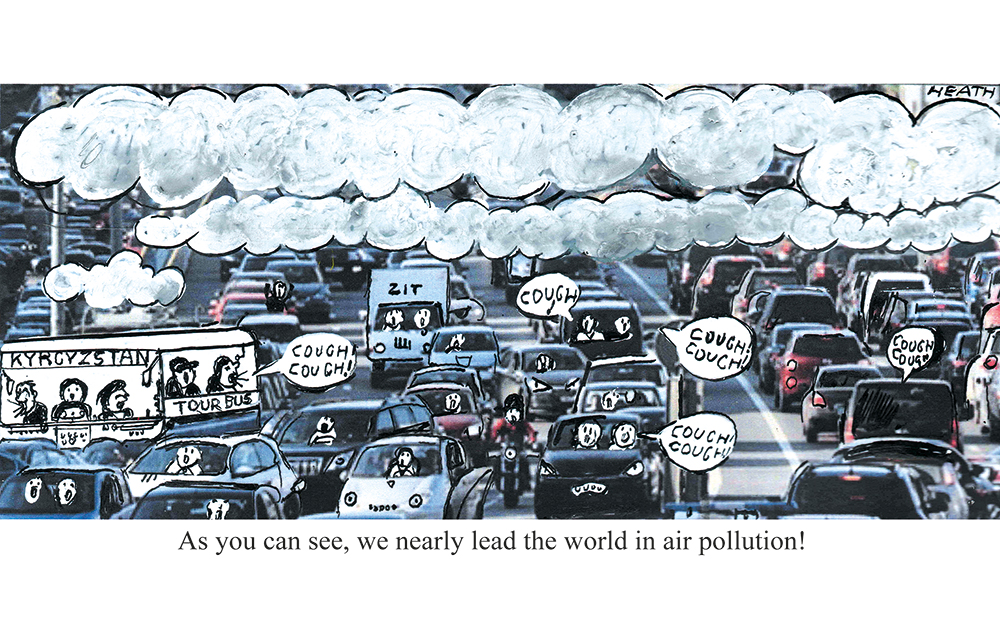On the day I arrive in Bishkek, Kyrgyzstan’s capital, it’s almost impossible to see the mountains that loom behind the city because of the smog. By the late morning, they have started to appear. Second-hand cars from around the world jam the four-lane highways that make up the city’s post-Soviet grid. Left-hand-drive cars (the correct side for Kyrgyz roads) are prized. My driver is on the right. He swerves to avoid a container lorry covered with Chinese symbols.
‘If you’re walking, you’re poor. The car is like the new horse,’ explains Anton Usov, chief spokesman for central Asia at the European Bank for Reconstruction and Development. In Bishkek’s art gallery, a photographic exhibition highlights the city’s smog problem: Bishkek is ranked the second most polluted city in the world by the United Nations Environment Programme. Most of the problem is down to the heavy use of coal for central heating in winter and air conditioning in summer. That the price of petrol has dropped since Russia’s invasion of Ukraine doesn’t hurt either.
Kyrgyz pride themselves on being, outwardly at least, the most democratic of the ‘Stan’ countries: Kyrgyzstan holds parliamentary elections, although in 2020 and 2021, the votes resulted in mass protests and accusations of rigging. Aisha Mambetalieva, a Bishkek native, explains that the country has swung almost too fast from nomadic life to Soviet rule, then independence and capitalism. She sums it up by explaining the changes made to the Kyrgyz language, which until the 20th century was written in Arabic. Latin script was adopted in 1928 until Stalin mandated the Cyrillic alphabet be used. Today, Latin script is slowly creeping back. ‘We need time to get used to the changes,’ she says.
Down the road from Bishkek, in Tokmok, a former US military training base is used by the Kyrgyz military.








Comments
Join the debate for just £1 a month
Be part of the conversation with other Spectator readers by getting your first three months for £3.
UNLOCK ACCESS Just £1 a monthAlready a subscriber? Log in